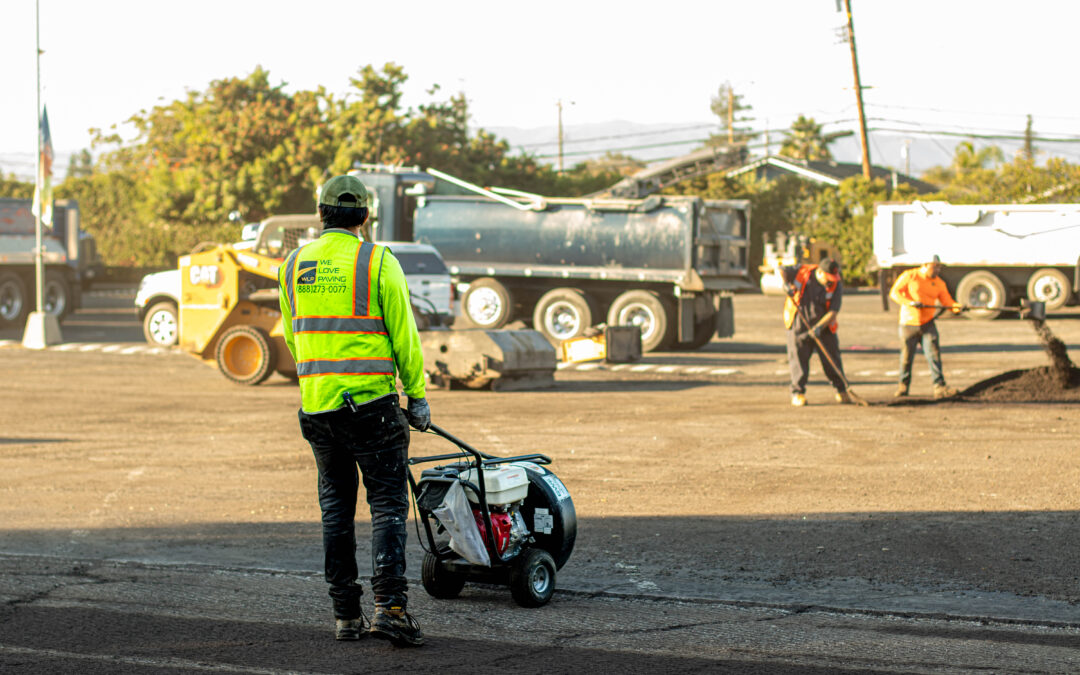Asphalt driveways and parking lots can deteriorate over time due to weather conditions, traffic, and age. If your existing asphalt surface is showing signs of wear and tear, you might wonder whether you can simply overlay new asphalt on top of the old one. The answer is yes, but there are important considerations and steps to follow to ensure a successful and durable result.
Benefits of Overlaying Asphalt
Overlaying asphalt, also known as resurfacing, has several advantages:
- Cost-Effective: Resurfacing is generally less expensive than a complete removal and replacement of the old asphalt.
- Time-Saving: The process is quicker, reducing downtime and inconvenience.
- Improved Appearance: A new layer of asphalt can give your driveway or parking lot a fresh, smooth look.
- Extended Lifespan: When done correctly, resurfacing can extend the life of your asphalt surface by several years.
Potential Issues to Consider
While overlaying old asphalt with new asphalt has its benefits, there are potential issues to be aware of:
- Underlying Damage: If the old asphalt has significant structural damage, such as deep cracks or a compromised base, simply adding a new layer won’t solve the underlying problems.
- Height Increase: Adding a new layer of asphalt will raise the surface level, which can affect curbs, drainage, and transitions to other surfaces.
- Adhesion Problems: For the new layer to bond properly, the old surface must be clean and free of debris, oil, and loose material.
How to Prepare the Old Asphalt Surface
Proper preparation is crucial for a successful asphalt overlay. Here are the key steps involved:
- Inspection: Assess the condition of the old asphalt. Look for deep cracks, potholes, and drainage issues. If the damage is extensive, it may be necessary to repair these areas before overlaying.
- Cleaning: Thoroughly clean the old surface to remove dirt, debris, and oil stains. Pressure washing is an effective method for this.
- Patching: Fill any large cracks or potholes with appropriate materials to create a smooth, even surface.
- Leveling: In cases where the old asphalt is uneven, a leveling course (thin layer of asphalt) may be applied to create a uniform base.
- Tack Coat: Apply a tack coat (adhesive) to the old surface to ensure proper bonding between the old and new asphalt layers.
Expert Tips for a Durable Finish
- Choose Quality Materials: Use high-quality asphalt mix to ensure durability and longevity.
- Proper Thickness: The new asphalt layer should be thick enough to withstand traffic and weather conditions. A typical overlay is between 1.5 to 2 inches thick.
- Professional Installation: Hiring experienced professionals for the job ensures that the work is done correctly and efficiently.
- Regular Maintenance: Even after resurfacing, regular maintenance such as sealcoating, crack filling, and cleaning is essential to prolong the life of the asphalt surface.
When Overlaying Isn’t the Best Option
While overlaying is a viable option in many cases, there are situations where it may not be the best solution:
- Severe Structural Damage: If the base layer is compromised or there are significant issues with drainage, a full replacement might be necessary.
- Multiple Layers: If there are already several layers of asphalt from previous overlays, adding another layer might not be feasible due to height restrictions and potential instability.
- Specific Usage Requirements: Heavy-duty areas with constant heavy traffic may require more robust solutions than an overlay.
Conclusion
Overlaying new asphalt over old asphalt is a practical and cost-effective way to refresh and extend the life of your driveway or parking lot. By following the proper preparation steps and addressing any underlying issues, you can achieve a durable and visually appealing result. Always consult with professional asphalt contractors to ensure the best approach for your specific situation.

